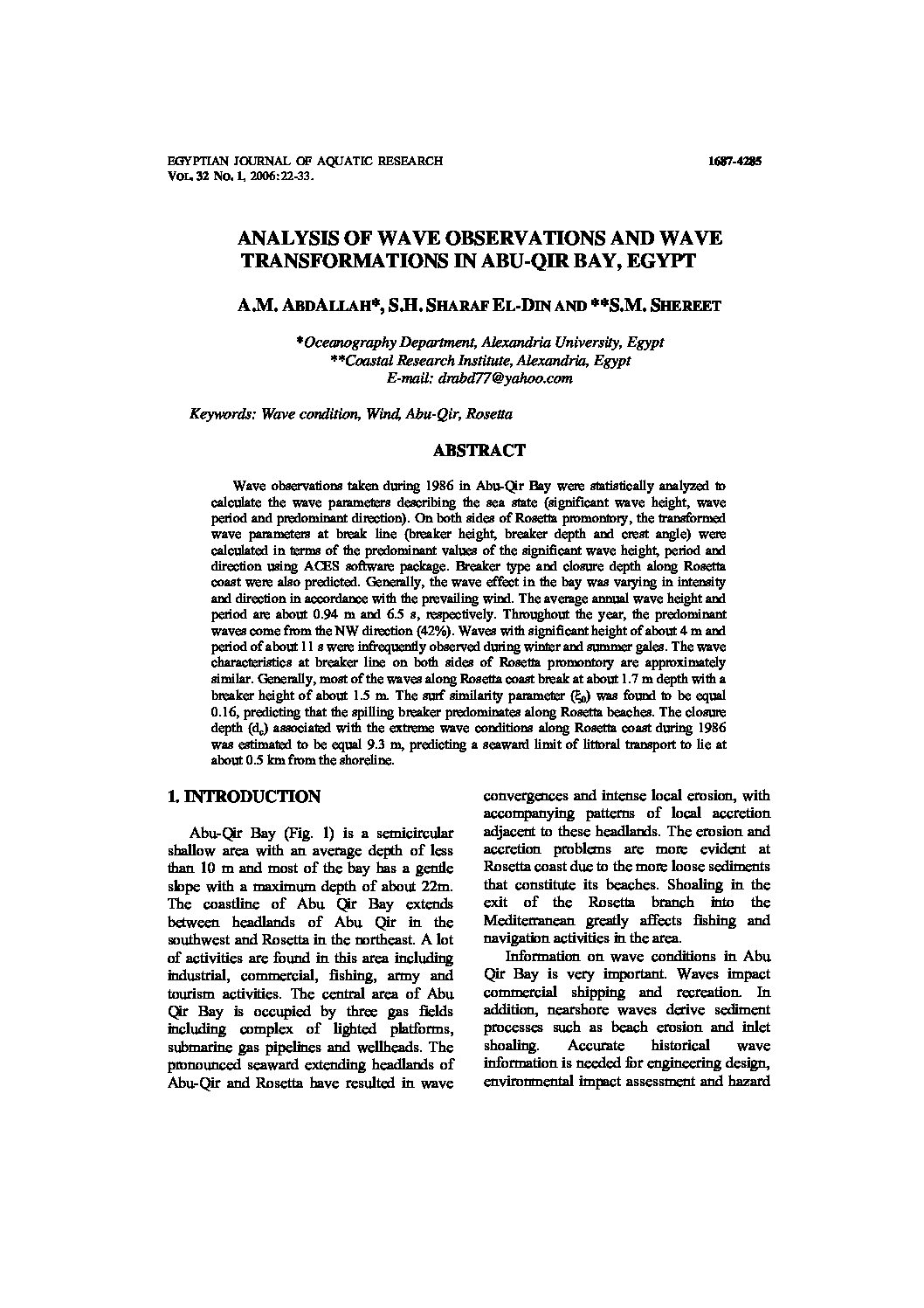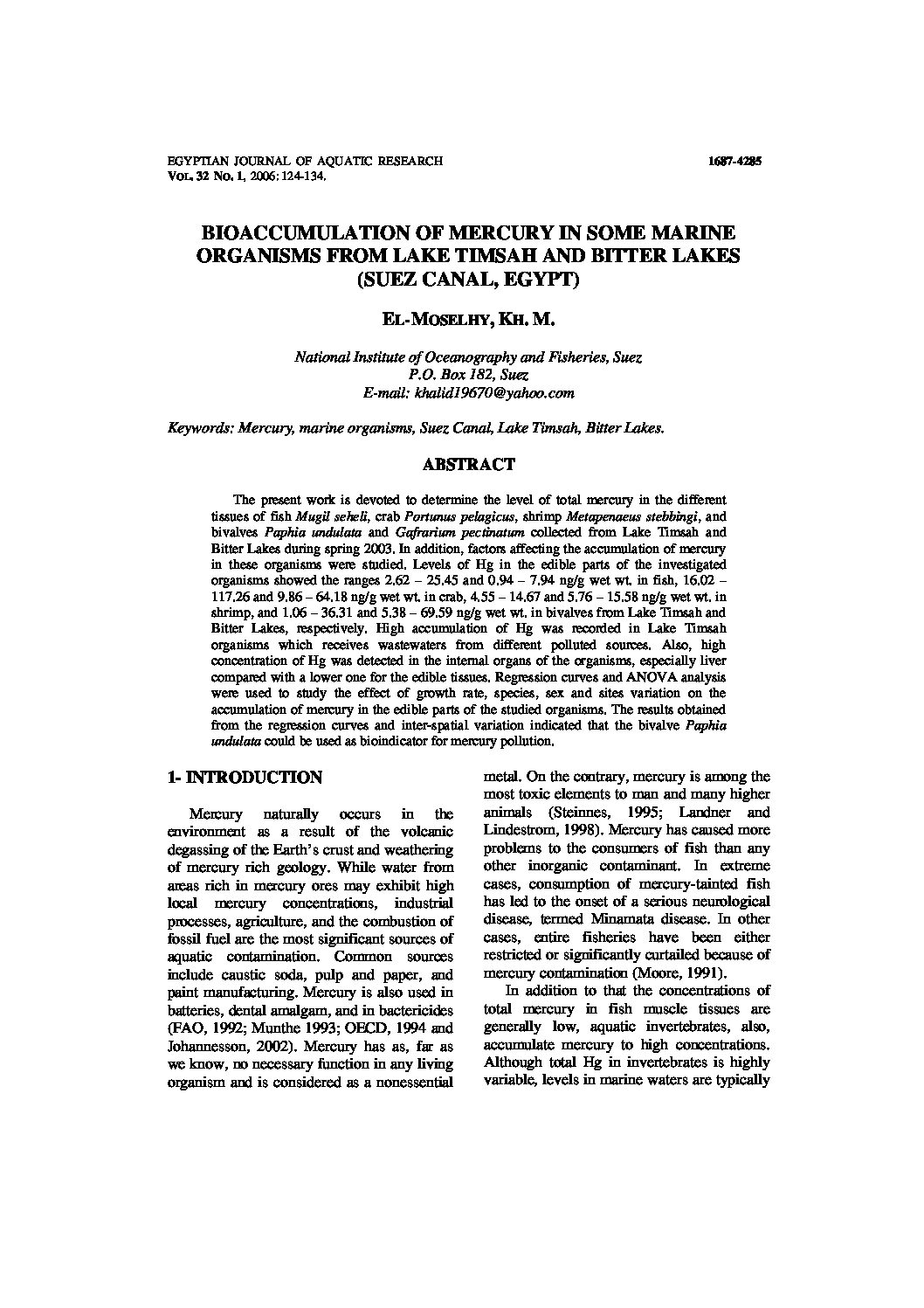Categories
vol-32SPATIAL VARIATION OF PHYTOPLANKTON AND SOME
PHYSICO-CHEMICAL VARIABLES DURING THE HIGHEST
FLOOD SEASON IN LAKE NASSER (EGYPT)
SAMIHA M. GHARIB AND AHMED M. ABDEL-HALIM
National Institute of Oceanography and Fisheries, Alexandria, Egypt.
E-mail: [email protected]
Keywords: Lake Nasser, phytoplankton, physico-chemical variables, flood season.
ABSTRACT
Species composition, abundance, and phytoplankton biomass in Lake Nasser were
studied during the highest flood season in autumn 1999, and were supported by some
physico-chemical environmental parameters. The nutrient salts levels were low to medium,
with ranges of 0.96-9.92 μg/L for nitrite, 20.14-72.14 μg/L for ammonia, complete
depletion -27.69 μg/L for phosphate, and 5.83-9.00 μg/L for silicate. A total of 71 taxa
were identified, of which 46% were chlorophytes, 26% bacillariophytes and 22%
cyanophytes. Phytoplankton abundance and biomass values were higher in the northern
stations than in the southern, but were lower than previously reported, indicating
approaching from oligomesotrophic status, with,respectively, means of 108.9 x 104
unit/L
and 1.18 mg/L for the main channel, and 712 x 103
unit/L and 1.229 mg/L for the khors.
Bacillariophyceae was the most important group, constituted 80% and 64% of total
abundance and 61% and 51% of total biomass in the main channel and khors, respectively.
Cyclotella and Melosira were the most abundant genera. Cyanophyceae second in
importance, forming 11.6% and 16.8% of total abundance and 34.6% and 42.9% of total
biomass in the main channel and khors, respectively. Phormidium and Anabaenopsis were
the most frequent genera. Highest species diversity (2.42) and evenness (0.92) were
recorded in Tushka, and highest richness (2.52) was recorded in El- Ramla. The statistical
regression models performed showed that the most physico-chemical factors affecting the
growth of phytoplankton abundance were pH values, dissolved phosphate and reactive
silicate.As a whole, a declining in phosphorus concentration, phytoplankton abundance and
biomass and development of Cyclotella and Melosira are approching the lake
oligomesotrophic status.







